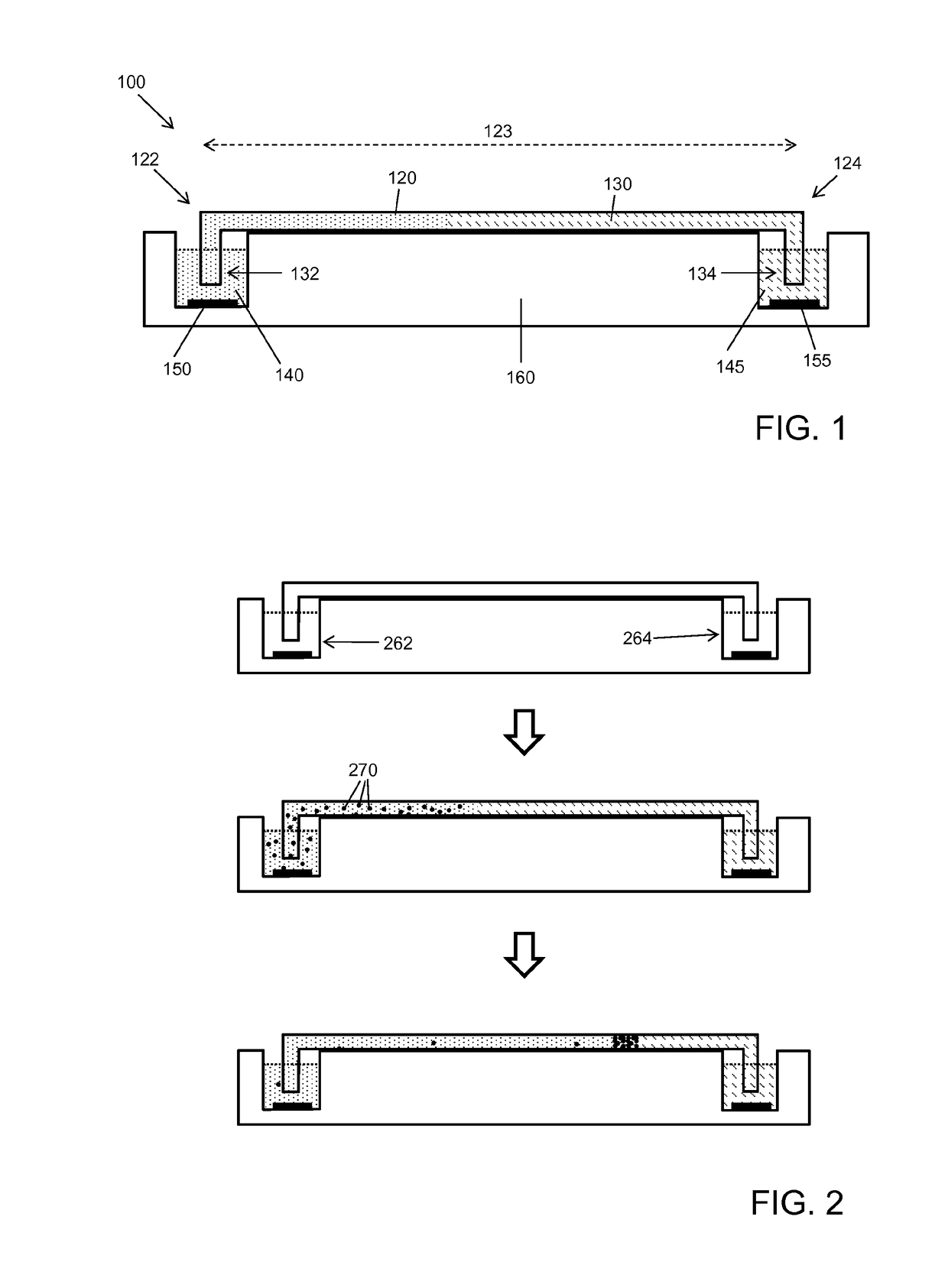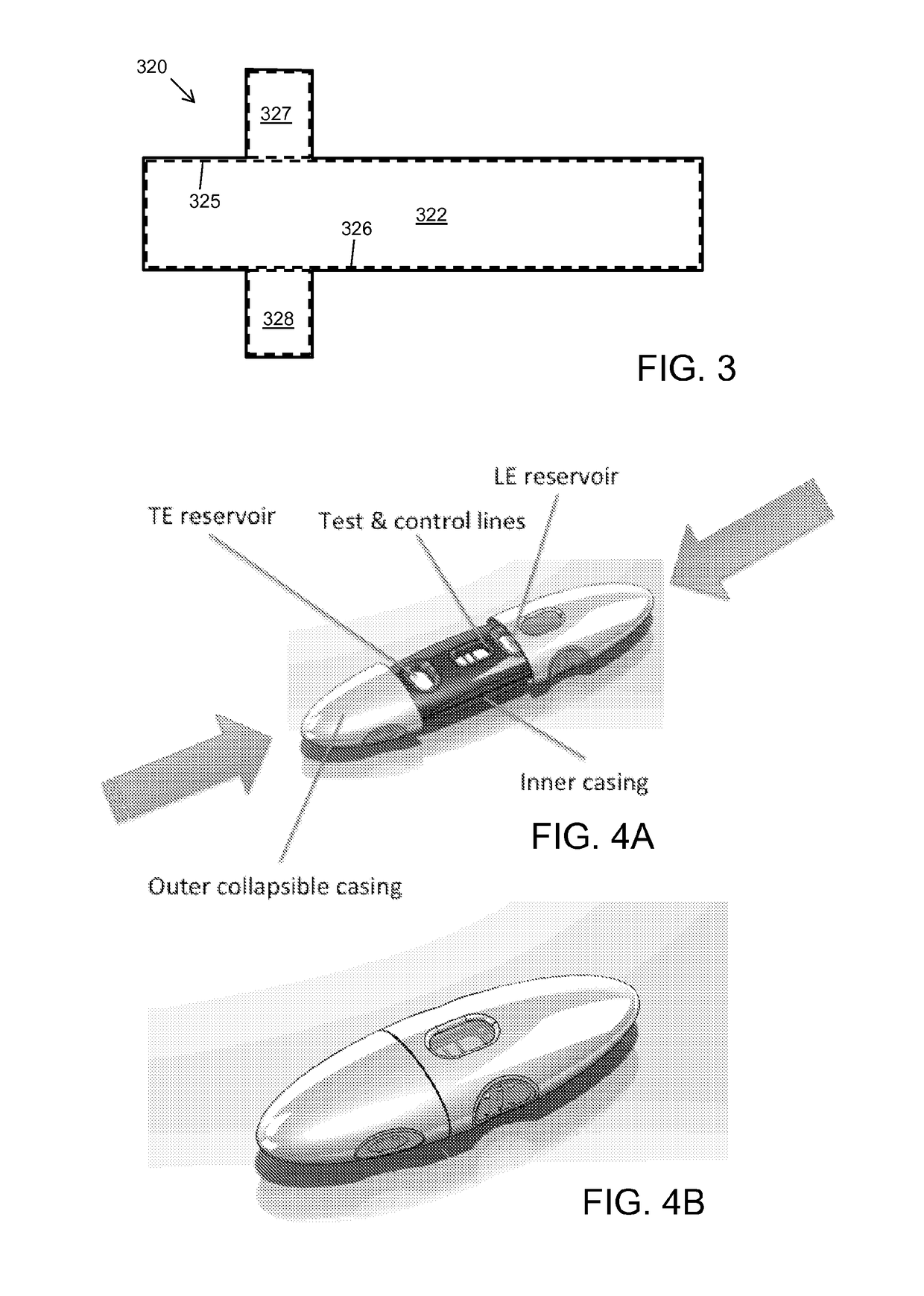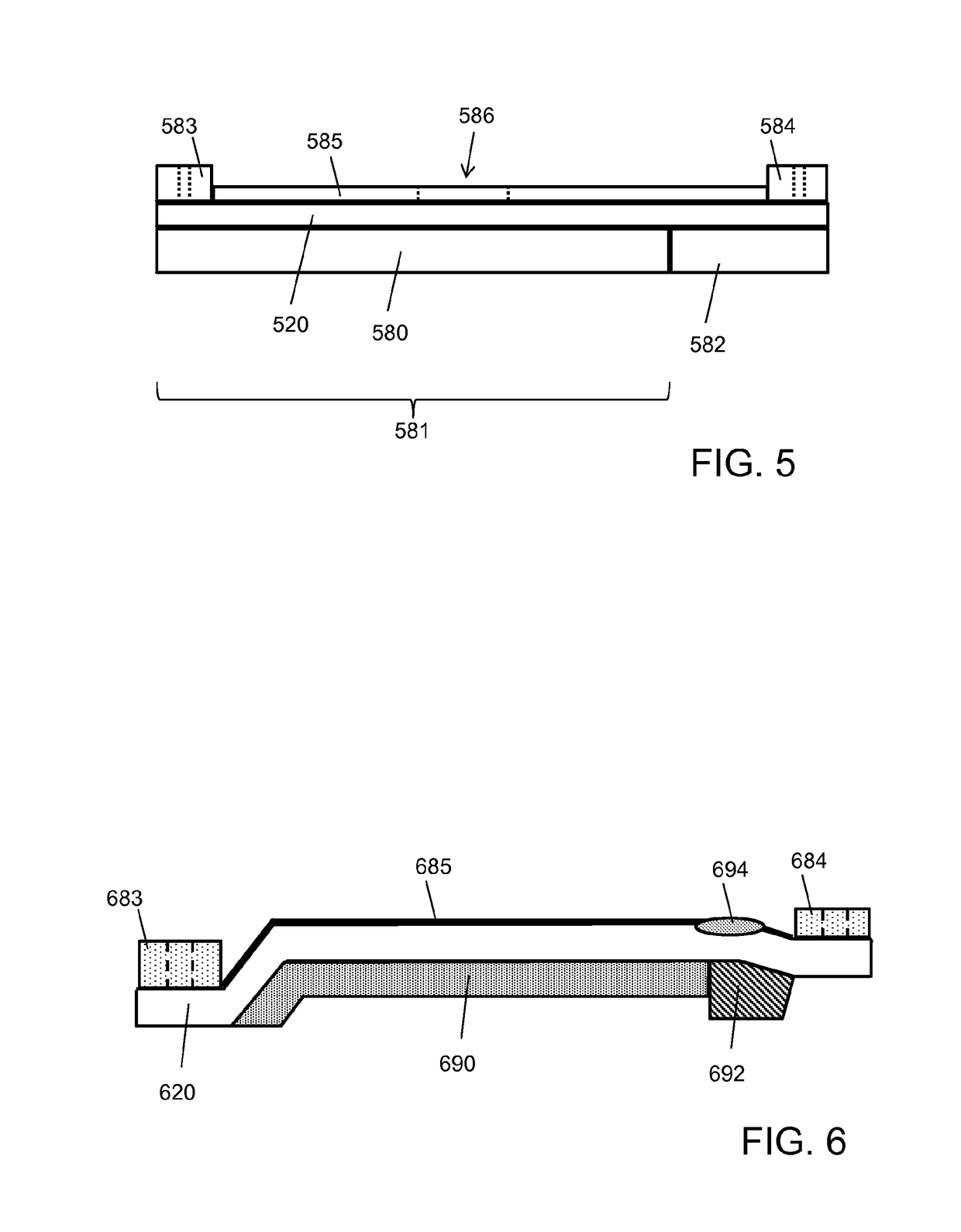Isotachophoretic device and methods
a technology of isotachophoretic devices and methods, applied in the direction of measurement devices, sampling, instruments, etc., can solve the problems of significant increase in testing time, additional instrumentation, and drastic reduction of itp concentration ratio
- Summary
- Abstract
- Description
- Claims
- Application Information
AI Technical Summary
Benefits of technology
Problems solved by technology
Method used
Image
Examples
examples
[0117]The experiments described here demonstrate the use of peak mode ITP on nitrocellulose membranes with the goal of improving the limit of detection of paper-based linear flow assays. As demonstrated here, ITP on nitrocellulose has the potential to target specific molecules in a complex matrix and increase their concentration at a test zone. It also has the capacity to operate with relatively large volume of sample, e.g., up to 100 μL, to extract a large fraction of the sample even when the analyte of interest is dilute in a relatively large-volume. Nitrocellulose membrane was used to conduct the ITP experiments described here because it has been widely applied to lateral flow assays and paper-based microfluidic devices. The structure and porosity of nitrocellulose membrane are highly controllable, it has a high contrast background for colorimetric assays, it is inexpensive, and it has high binding capacity for bio-molecules. Several studies regarding the design and optimization ...
PUM
| Property | Measurement | Unit |
|---|---|---|
| pore size | aaaaa | aaaaa |
| concentration | aaaaa | aaaaa |
| volumes | aaaaa | aaaaa |
Abstract
Description
Claims
Application Information
 Login to View More
Login to View More - R&D
- Intellectual Property
- Life Sciences
- Materials
- Tech Scout
- Unparalleled Data Quality
- Higher Quality Content
- 60% Fewer Hallucinations
Browse by: Latest US Patents, China's latest patents, Technical Efficacy Thesaurus, Application Domain, Technology Topic, Popular Technical Reports.
© 2025 PatSnap. All rights reserved.Legal|Privacy policy|Modern Slavery Act Transparency Statement|Sitemap|About US| Contact US: help@patsnap.com



